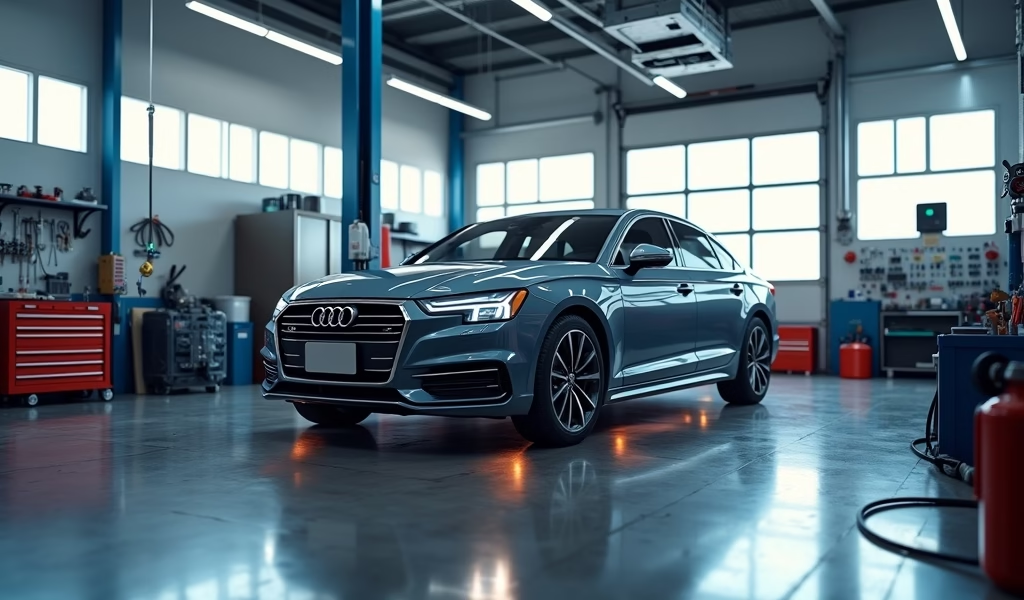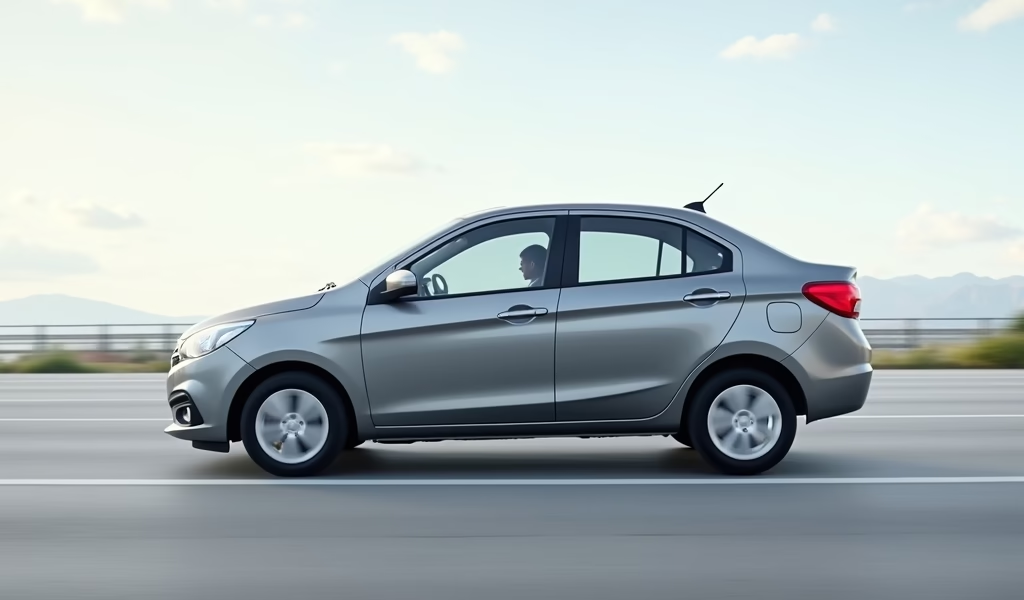Overview
This article provides practical strategies for reducing car insurance costs through careful vehicle selection, prioritizing safety features, understanding how vehicle specifications impact premiums, and smart insurance shopping tactics. Family-oriented vehicles like mid-size sedans and small SUVs typically have lower insurance rates, while factors such as engine size, safety technology, and comparison shopping across multiple insurers can significantly reduce annual premiums by hundreds or even thousands of dollars.
Table of Contents
- The Road to Affordable Car Insurance: Understanding the Landscape
- Tip #1: Strategic Vehicle Selection – Models That Won’t Break the Insurance Bank
- Tip #2: Safety Features That Make Insurers Smile (And Lower Your Premiums)
- Tip #3: How Vehicle Specifications Impact Your Insurance Costs
- Tip #4: Smart Insurance Shopping Strategies for Maximum Savings
- Putting It All Together: Your Roadmap to Insurance Savings
- Frequently Asked Questions
The Road to Affordable Car Insurance: Understanding the Landscape
Let me tell you something I’ve learned after 20 years under the hood and dealing with customers’ budgets – finding cars with cheapest insurance is as important as finding one with good gas mileage. The difference? Insurance costs can sneak up on you like a slow oil leak, draining your wallet month after month.
According to the latest data from the Insurance Information Institute, auto insurance premiums have skyrocketed by a whopping 17% in the past year alone – the steepest annual increase since the 1970s. For the average driver, that translates to roughly $1,780 per year, but the right vehicle choice could slash that figure significantly.
As a mechanic who’s seen countless folks struggle with the total cost of car ownership, I can tell you that insurance premiums are often the forgotten factor when shopping for vehicles. Sure, that sleek sports coupe might give you butterflies, but its insurance premiums could give your wallet nightmares.
The good news? You’ve got options. Lots of them. And you don’t have to settle for a boring econobox to score reasonable insurance rates. With some insider knowledge and strategic thinking, you can find a vehicle that both satisfies your driving desires and keeps insurance costs in check.
Throughout this guide, I’ll share the same advice I give my regular customers when they’re contemplating their next vehicle purchase. These aren’t just theoretical tips – they’re battle-tested strategies I’ve seen work time and again for real drivers with real budgets.
So grab a cup of coffee, and let’s talk about how to keep those insurance premiums from draining your bank account faster than a cracked radiator.

Tip #1: Strategic Vehicle Selection – Models That Won’t Break the Insurance Bank
When it comes to finding vehicles with budget-friendly insurance rates, I’ve noticed a clear pattern over my years in the shop. Family-focused vehicles consistently outperform their flashier counterparts in the insurance affordability department.
Insurance companies aren’t out to rain on your parade – they’re just playing the odds based on claims data. And the data doesn’t lie: certain vehicles simply cost less to repair, have better safety records, and are less likely to be driven aggressively.
Here are some vehicle categories that typically enjoy lower insurance premiums:
- Mid-size sedans (Toyota Camry, Honda Accord)
- Small SUVs (Honda CR-V, Toyota RAV4, Subaru Forester)
- Minivans (Honda Odyssey, Toyota Sienna)
- Economy cars (Honda Civic, Toyota Corolla)
According to a recent analysis by the Insurance Institute for Highway Safety, mid-size cars and small SUVs have significantly lower driver death rates than small cars and sports models. Insurance companies take note of these statistics, adjusting premiums accordingly.
One of my customers, Mike, switched from a Mustang GT to a Honda Accord and watched his annual insurance bill drop by $870 – enough to cover his basic maintenance for the entire year. The Accord wasn’t as heart-racing as the Mustang, but Mike found he actually enjoyed the comfortable ride and extra features he could afford with the insurance savings.
What about specific models? Based on industry data and what I’ve seen with my customers, here are some of the most consistently insurance-friendly vehicles:
- Honda CR-V (averages 10-15% below median insurance costs)
- Subaru Outback (excellent safety ratings translate to lower premiums)
- Mazda CX-5 (combines safety with relatively low repair costs)
- Toyota Camry (parts availability and repair simplicity keep costs down)
- Jeep Wrangler (surprisingly affordable despite its adventure capabilities)
Remember that insurance costs aren’t just about the vehicle itself, but also about who typically drives it. Minivans enjoy some of the lowest full coverage insurance rates partly because their typical drivers (parents) tend to drive more cautiously. Meanwhile, sports cars attract higher premiums not just because of repair costs, but because they’re often driven more aggressively.
The takeaway? If insurance costs are a significant concern, lean toward practical, family-oriented vehicles with strong safety records. Your wallet will thank you every month when that insurance bill arrives.
Tip #2: Safety Features That Make Insurers Smile (And Lower Your Premiums)
Here’s something most salespeople won’t tell you, but as a mechanic who’s seen the aftermath of accidents – and the insurance claims that follow – I can confirm: modern safety features aren’t just protecting your body; they’re protecting your bank account too.
Insurance companies love vehicles that prevent accidents and minimize injuries. It’s simple math for them – fewer accidents and less severe injuries mean fewer and smaller claims to pay out. This translates directly to lower premiums for you.
According to data from LexisNexis Risk Solutions, vehicles equipped with advanced driver assistance systems (ADAS) see a 27% reduction in bodily injury claims and a 19% reduction in property damage claims. Those are significant numbers that insurers can’t ignore.
When shopping for a vehicle with insurance savings in mind, prioritize these safety features:
- Automatic Emergency Braking (can reduce rear-end collisions by up to 50%)
- Lane Departure Warning/Lane Keep Assist
- Blind Spot Detection (reduces lane-change accidents significantly)
- Adaptive Headlights (improve nighttime visibility by up to 70%)
- Backup Cameras (now standard on newer vehicles)
- Electronic Stability Control (reduces single-vehicle crashes by about 30%)
From my experience in the garage, I can tell you that vehicles with these features not only come in for fewer accident repairs, but when they do, the damage is often less severe. I remember when Sandra, one of my regular customers, avoided what would have been a nasty rear-end collision thanks to her Subaru’s automatic emergency braking system. The potential savings from that single avoided accident would have paid for years of her insurance premium difference.
Beyond accident prevention, anti-theft features also contribute to lower insurance costs. Comprehensive coverage rates (which protect against theft) can be significantly reduced with features like:
- Engine immobilizers
- GPS recovery systems
- Audible alarms
- VIN etching
The National Insurance Crime Bureau reports that vehicles equipped with tracking devices can qualify for insurance discounts between 15-25% on the comprehensive portion of their policy – not insignificant when you’re trying to minimize your overall insurance costs.
One savvy approach I’ve seen work well is to focus on vehicles from brands that make safety features standard rather than optional. Subaru, for instance, includes its EyeSight driver assist technology on most models, while some other manufacturers charge premium prices for similar features. This standardization of safety tech is one reason why Subaru consistently ranks among brands with favorable insurance rates.
The bottom line? When shopping for a vehicle with insurance costs in mind, don’t just look at the model – look under the hood at its safety technology. Those features might seem like fancy extras, but they’re real money-savers when it comes to your insurance premiums.
Tip #3: How Vehicle Specifications Impact Your Insurance Costs
As someone who’s spent decades getting intimate with engines, transmissions, and everything in between, I can tell you with certainty – what’s under the hood matters to your insurance company. But perhaps not in the ways you might expect.
Engine size and horsepower are the first factors that significantly impact your premiums. Insurance companies have crunched the numbers and found that vehicles with larger engines and more horsepower are statistically more likely to be involved in accidents – and those accidents tend to be more serious.
Let me share a real-world example: One of my regular customers, Dave, owns a Toyota Camry LE with the standard 2.5-liter four-cylinder engine. His brother owns the identical model year Camry but in XSE trim with the 3.5-liter V6. Despite being the same car in many respects, Dave’s brother pays about 18% more for insurance – nearly $300 annually – simply due to the larger engine.
According to data from the Highway Loss Data Institute, vehicles with high horsepower-to-weight ratios have claim frequencies that are 30% higher than average. This translates directly to higher premiums.
The vehicle’s age plays a complex role in insurance calculations:
- Newer vehicles generally cost more to repair or replace, increasing comprehensive and collision premiums
- However, newer vehicles have better safety features, which can partially offset those higher costs
- Vehicles 3-5 years old often hit the sweet spot for insurance affordability
- Very old vehicles (10+ years) might have lower comprehensive/collision costs but may lack safety features that earn discounts
Vehicle size matters too, though perhaps counterintuitively. Larger vehicles like SUVs and pickup trucks generally cause more damage in accidents but provide better protection for their occupants. This creates an interesting insurance dynamic – they may have higher liability premiums (covering damage to others) but lower medical payment premiums (covering injuries to you and your passengers).
A study by the Insurance Institute for Highway Safety found that small cars have driver death rates nearly twice as high as large cars. Insurance companies are well aware of this statistic.
Repair costs are another crucial factor. Vehicles with commonly available parts and straightforward repair procedures typically enjoy lower premiums. This is why domestic brands like Chevrolet and Ford often have competitive insurance rates – their parts are widely available and most shops have extensive experience working on them.
In my years turning wrenches, I’ve noticed that European luxury vehicles not only cost more to repair because of expensive parts, but also because of specialized labor requirements. Many require proprietary diagnostic equipment and specialized training, limiting repair options and driving up costs. Insurance companies factor this into their premium calculations.
The vehicle’s trim level influences insurance costs too. Higher trim levels mean more expensive components to replace after an accident. That premium sound system, leather interior, and panoramic sunroof all translate to higher repair costs and consequently higher insurance premiums.
One often-overlooked specification is the vehicle’s theft rate. Insurance companies track which models are most frequently stolen, adjusting comprehensive coverage rates accordingly. According to the National Insurance Crime Bureau, full-size pickup trucks and Japanese sedans consistently rank among the most frequently stolen vehicles, which can bump up their insurance costs despite other favorable factors.

Tip #4: Smart Insurance Shopping Strategies for Maximum Savings
Finding a vehicle with insurance-friendly characteristics is only half the battle. How you shop for and structure your insurance coverage can make just as big a difference in your premiums. As someone who’s helped countless customers navigate this process, I’ve collected some battle-tested strategies that consistently deliver results.
First, comparison shopping isn’t just helpful—it’s essential. Insurance rates for identical coverage on the same vehicle can vary by as much as 300% between companies. This isn’t slight variation; it’s the difference between paying $1,000 or $3,000 annually for the same protection.
A recent study from Consumer Reports found that single drivers could save an average of $1,846 by comparing just three insurance quotes instead of accepting their first offer. That’s not pocket change—that’s serious money that could cover several years’ worth of maintenance on your vehicle.
Here’s my recommended approach to smart insurance shopping:
- Get quotes from at least 5 companies (including both national and regional insurers)
- Use comparison tools like The Zebra or Compare.com to expedite the process
- Request the same coverage limits across all quotes for accurate comparison
- Look beyond the premium to consider claims satisfaction ratings
Bundling policies is another powerful strategy. Most insurance companies offer multi-policy discounts when you combine auto insurance with homeowners, renters, or other types of coverage. These discounts typically range from 10-25%, according to the Insurance Information Institute.
Pay attention to your deductible selection. Raising your collision and comprehensive deductibles from $500 to $1,000 can reduce premiums by 15-30%. However, make sure you keep your deductible at an amount you could comfortably pay if needed. I’ve seen too many customers struggle to pay high deductibles after an accident, forcing them into difficult financial situations or deferred repairs.
Usage-based insurance programs have revolutionized insurance pricing for low-mileage and safe drivers. Programs like Progressive’s Snapshot, Allstate’s Drivewise, or State Farm’s Drive Safe & Save monitor driving habits and mileage, offering discounts up to 40% for those who drive infrequently and safely.
One of my customers, a retired teacher named Elaine, switched to a usage-based insurance program and saved 32% on her premium because she only drives about 4,000 miles annually and rarely during peak traffic hours. For low-mileage drivers, these programs can be game-changers.
Don’t overlook available discounts. Most insurers offer rate reductions for:
- Good driving records (3-5 years without accidents or violations)
- Good student discounts (typically for B average or better)
- Professional organization or alumni group memberships
- Military service
- Automatic payment enrollment
- Paperless billing
- Full payment upfront
These discounts might seem small individually (typically 2-10% each), but they can stack up to significant savings. Many insurers don’t proactively apply all discounts you’re eligible for, so it pays to ask specifically about each one.
Credit scores play a surprisingly significant role in insurance pricing in most states. A study by Consumer Reports found that drivers with “good” credit paid $214 more on average than those with “excellent” credit, while those with “poor” credit paid a stunning $1,301 more. Improving your credit score can deliver meaningful insurance savings over time.
Finally, consider insurance costs before finalizing your vehicle purchase. Get quotes for your top vehicle choices before signing on the dotted line. I’ve had customers who were shocked to learn that two similar vehicles had insurance premiums that differed by $800 annually—information that would have changed their purchase decision had they known beforehand.
Putting It All Together: Your Roadmap to Insurance Savings
Throughout this guide, we’ve popped the hood on insurance costs and examined the key components that drive your premiums. Now it’s time to synthesize this knowledge into an actionable roadmap for finding cars with cheapest insurance without sacrificing your automotive needs and wants.
The four-cylinder engine of your insurance-saving strategy consists of:
- Choosing vehicle models with historically lower insurance costs
- Prioritizing safety features that insurance companies reward
- Understanding how vehicle specifications influence premiums
- Shopping smartly for coverage with strategic policy structuring
The most powerful approach combines all these elements. For instance, a three-year-old Honda CR-V with advanced safety features, insured through a usage-based program with bundled policies and appropriate deductibles, represents the perfect storm of insurance savings—potentially cutting your costs by 40-50% compared to less strategic choices.
Remember that car ownership is a marathon, not a sprint. The difference between $1,200 and $2,000 annual insurance premiums might not seem dramatic at first glance, but over a 5-year ownership period, that’s $4,000 in your pocket—enough for a spectacular vacation or a healthy contribution to your next vehicle down payment.
As someone who’s spent decades helping people get the most from their vehicles, I can tell you that few things are more frustrating than watching customers struggle with insurance costs that could have been avoided with better planning. The time to think about insurance is before you buy, not after.
Take these insights, do your homework, and approach your next vehicle purchase with insurance costs firmly in mind. Your future self—and your bank account—will thank you for your foresight and diligence.
Frequently Asked Questions
What types of cars have the cheapest insurance rates?
Mid-size sedans, minivans, and small SUVs typically have the lowest insurance rates. Models like the Honda CR-V, Toyota Camry, and Subaru Outback consistently rank among the most affordable to insure due to their safety records and repair costs.
Does car color affect insurance rates?
No, contrary to popular belief, your vehicle’s color does not affect insurance premiums. Insurance companies don’t even ask for color information when providing quotes as factors like vehicle make, model, age, and safety features are far more relevant to risk assessment.
How much can I save by choosing an insurance-friendly vehicle?
The difference between insuring an insurance-friendly vehicle versus a high-premium model can range from $500 to $1,500 annually. Over a five-year ownership period, this could translate to savings of $2,500-$7,500 for the same coverage levels.
Are older cars always cheaper to insure than newer models?
Not necessarily. While older cars typically have lower values and thus cheaper comprehensive and collision premiums, newer vehicles often come with advanced safety features that earn substantial discounts. The sweet spot for insurance affordability is often vehicles that are 3-5 years old.
Do electric vehicles cost more to insure?
Yes, electric vehicles generally cost 15-30% more to insure than their gas-powered counterparts. This is primarily due to higher repair and replacement costs, especially for battery systems, though this gap is narrowing as EV technology becomes more mainstream.
Remember, finding a vehicle with affordable insurance isn’t just about pinching pennies—it’s about smart ownership that keeps more money in your pocket for the things that really matter. And as any good mechanic will tell you, preventive maintenance is always cheaper than emergency repairs—the same philosophy applies to insurance planning!

